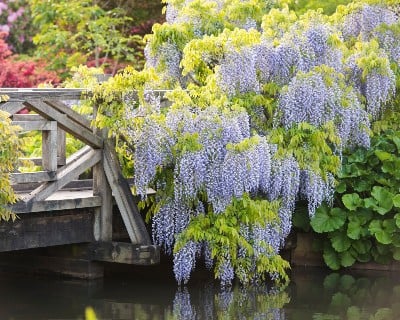How to grow the perfect wisteria
Love wisteria but worried about its wayward habits? Plantsman Graham Rice offers advice on which to choose and how to grow them
Wisterias are beautiful. Their long colourful cascades of flowers are truly show-stopping and almost everyone who sees one in its prime would like one for the garden. But having a wisteria can be daunting. A 6m (20ft) height is nothing for a wisteria so for many gardens they’re just far too big. Or are they?
There are two factors to consider that will help you grow your own wisteria.
1) Choose the right variety
Varieties of Wisteria sinensis have the benefit of flowering in May and June before the leaves develop and start to mask the display. ‘Prolific’ is outstanding, living up to its name with 30cm (12in) racemes of bluish-violet flowers that all open together for a dramatic effect. ‘Jako’ is white and strongly-fragrant, ‘Amethyst’ is reddish-violet; all these are ideal on a house wall.
The longest racemes of flowers belong to the fragrant lilac W. floribunda ‘Multijuga’; they can be 1m (3ft) or more in length but the plant needs to be allowed to grow high to show them off. Scaling a huge ladder to prune is not everyone’s idea of gardening. I once saw ‘Multijuga’ allowed to scramble up, unpruned, a mature Lombardy poplar – that was a sight.
Also consider ‘Domino’, whose two-tone lilac-blue racemes (flower clusters) are among the shortest, but appear on very young plants.
Finally, look out for two hybrids, both with two-tone violet flowers. ‘Burford’ has flowers in 45cm (18in) racemes while ‘Caroline’ has short racemes but is one of the earliest.
2) Prune wisteria regularly

Wisteria: pruning

Growing guide: wisteria



